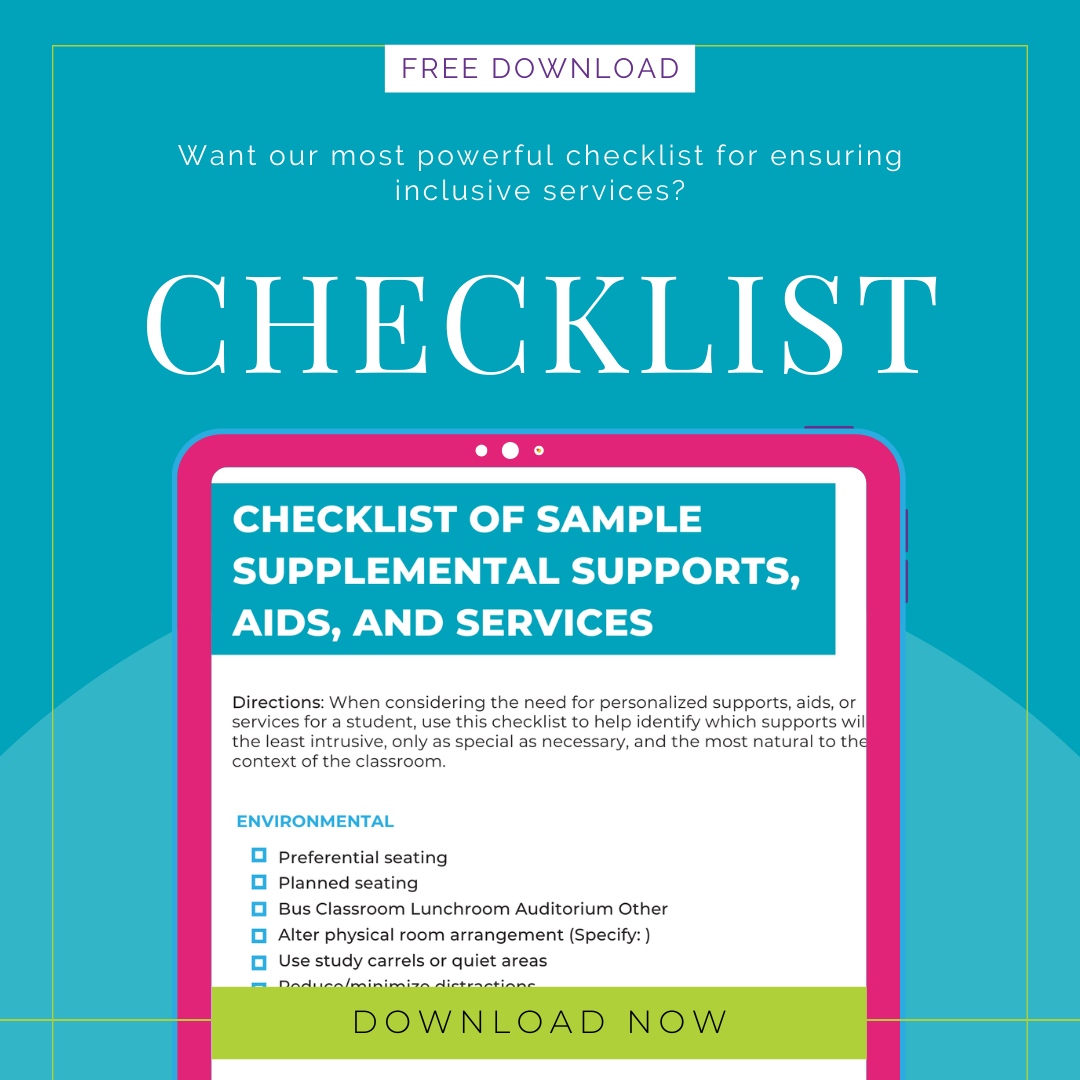Here are 20 Evidence-Based Ways to Magically Make IEP goals Inclusive
- Incorporate IEP Goals Naturally: Integrate Individualized Education Plan (IEP) goals into daily classroom activities and routines to make learning seamless.
- Embed Goals In Inclusive Settings and Activities: Increase access, participation, and progress by incorporating IEP goals and objectives into daily activities and the general education curriculum.
- Follow Developmentally Appropriate Practices: Ensure that instruction aligns with age-appropriate educational experiences.
- Mix it up: Use both developmentally appropriate practices with individualized instruction techniques to support young students without compromising child-centered methodologies.
- Do NOT Pull Children Out: instead, goals should be embedded in typical activities.
- Use a Variety of Teaching Strategies: During everyday activities, apply different teaching methods that cater to the child’s strengths, gifts and talents.
- Plan for Generalization: Design instruction that helps children apply learned skills across different settings and situations.
- Create a Fun Factor: Develop learning activities that are enjoyable and engaging, increasing the effectiveness of educational interventions.
- Capitalize on Children’s Interests: Use activities that interest the child to maintain engagement and facilitate deeper learning.
- Ensure Goals are Functional and Generative: Set practical IEP goals that can produce broad learning outcomes.
- Use Real-Life Contexts for Assessment: Assess children in real-life contexts to set relevant and practical goals.
- Adopt a Team Approach: Collaborate with parents, therapists, and other educators to create a cohesive educational plan.
- Develop an Activity Matrix: Use an activity matrix to organize and visualize when and where each IEP goal will be targeted throughout the day.
- Scaffold Learning: Provide just enough assistance to support the child’s learning without taking over the task.
- Provide Just Right supports: Start with minimal support and increase assistance as needed, allowing children to attempt tasks independently first.
- Focus on Transdisciplinary Skills: Encourage skills that integrate multiple areas of development, such as social, emotional, and physical.
- Regularly Update IEP Goals: Review and adjust IEP goals periodically based on the child’s progress and evolving needs.
- Document Progress Methodically: Keep detailed records of the child’s performance on IEP goals to monitor progress and adjust strategies.
- Use Logical Antecedents and Consequences: Apply logical and related antecedents and consequences within the learning activity to promote understanding and retention.
- Engage Peers in Learning Processes: Involve classmates to foster a supportive learning environment.
Tips are based upon the research of Dr. Kristie Pretti-Frontczak, from Inclusive Schooling.
FULL CITATION: Grisham-Brown, J., Hemmeter, M. L., & Pretti-Frontczak, K. (2002). Teaching IEP goals and objectives in the context of classroom routines and activities. Journal of Early Intervention, 23(2), 151-166.
FREE CHECKLIST:
Want our most powerful checklist for ensuring inclusive services?
- Effective strategies to try before even considering a pull-out setting
- Wildly expand your options for student support
- A must-have checklist for every IEP meeting!
- Get everyone thinking outside the box!
- Creative solutions to providing services and supports
- Finally, a common starting place for parents and educators


